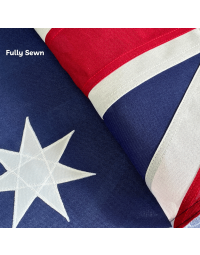Remembrance Day Flag Protocol

Remembrance Day, observed on November 11 each year, holds a special place in the hearts of many Australians. Remembrance Day has been observed since the end of the First World War, to honour and remember those who have died in the line of duty. Remembrance Day is observed on November 11 to mark the ending of World War I hostilities, which formally ended "at the 11th hour of the 11th day of the 11th month" in 1918.
In Australia, Remembrance Day is commemorated across the country with memorial services that include a one-minute silence to remember the sacrifice of those who have died for Australia. These ceremonies usually feature a bugler playing "The Last Post", which was a common bugle call at the end of the military day. This is often followed by "The Rouse", the first call of the morning. These two calls played together ceremonially symbolise a night vigil, which represents a pledge to guard and honour the dead.
On Remembrance Day, there are certain flag protocols outlined by the Australian Government and the Australian Defence Force which should be followed to respectfully commemorate the loss of Australian lives in wars, conflicts and peace operations.
The Australian National Flag should be flown at the peak from dawn until precisely 10:30am when it should be adjusted to the half-mast position. At 11:02am the Australian National Flag should be raised to the peak for the remainder of the day.
Notes on flying the Australian National Flag at half-mast:
- The flag should be lowered to a position recognisably half-mast. An acceptable position would be when the top of the flag is a third of the distance down from the top of the flagpole.
- The flag should never be flown at half-mast at night, even if it is illuminated.
- When lowering a flag to the half-mast position, it should be raised to the top of the flagpole and then lowered ceremoniously to the half-mast position.
- When lowering the flag from a half-mast position, it should be briefly raised to the top of the flagpole and then lowered ceremoniously.
- When flying the Australian National Flag at half-mast with other flags, all flags in the set should be flown at half-mast.
- The Australian National Flag should be raised first and lowered last.
- If flying the Australian National Flag alongside flags of other nations, it would be appropriate to seek permission from the diplomatic representatives of that nation to half-mast its flag.



